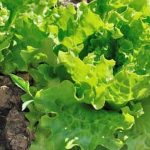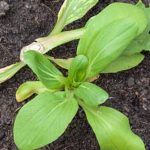During times of war, victory gardens played a crucial role in supplementing food supplies and boosting morale. These gardens were an important part of the war effort, providing families with fresh produce and helping to alleviate food shortages. In this article, we will explore the popular vegetables that were commonly grown in victory gardens, as well as the significant impact these gardens had on communities during wartime.
Victory gardens have a rich history dating back to World War I and were especially prominent during World War II. The government encouraged citizens to plant their own gardens to ease pressure on the public food supply and free up resources for the military. This initiative also served as a way for people to feel actively involved in supporting the war effort, boosting patriotism and resilience.
Among the most popular vegetables grown in victory gardens were tomatoes, carrots, lettuce, beans, potatoes, peppers, cabbage, and squash. These crops were not only nutritious but also relatively easy for home gardeners to cultivate. The abundance of these fresh vegetables helped families cope with rationing and food shortages by providing them with a sustainable source of nutrition.
The Popular Vegetables
During World War I and World War II, victory gardens played a crucial role in providing fresh produce to communities facing food shortages. These gardens were planted at private homes, public parks, and vacant lots, with the goal of relieving pressure on the public food supply and boosting morale during wartime. Victory gardens not only allowed for increased food production, but also promoted self-sufficiency and reduced the demand on commercial agriculture.
The most popular vegetables grown in victory gardens included:
- Tomatoes
- Carrots
- Lettuce
- Beans
- Potatoes
- Peppers
- Cabbage
- Squash
These vegetables were chosen for their relatively easy cultivation and high nutritional value. They provided essential vitamins and minerals that were often lacking due to rationing and food shortages during wartime. By growing these vegetables in their victory gardens, families were able to supplement their diet with fresh, homegrown produce.
Many of these popular vegetables not only served as a source of nutrition for families, but they also had a practical purpose in supporting the war effort. For example, tomatoes could be canned for long-term storage, carrots could be used in recipes to add sweetness without sugar (which was rationed), and beans provided a valuable source of protein. Victory gardens therefore played a crucial role in addressing both nutritional needs and the overall war effort.
In addition to their practical benefits, these popular vegetables fostered a sense of community and family involvement. Neighbors would often share tips and seeds with each other, while parents passed down gardening skills to their children. This communal aspect of victory gardens helped bring people together during a difficult time and left a lasting legacy on modern gardening practices.
The Role of Victory Gardens
During wartime, victory gardens played a crucial role in supporting the war effort and addressing food shortages. These gardens allowed individuals and communities to grow their own vegetables, fruits, and herbs, reducing the demand on commercial food supplies. This not only provided fresh produce for families but also freed up resources to feed troops. Victory gardens were essentially a way for civilians to contribute to the war without being directly involved in combat.
Rationing was a common practice during wartime, and many essential goods, including certain types of food, were in short supply. Victory gardens helped alleviate this issue by allowing people to grow their own vegetables, reducing the strain on the rationed food supply. Additionally, victory gardens served as a way to boost morale during difficult times, giving individuals a sense of self-sufficiency and control over their own well-being.
The types of vegetables grown in victory gardens varied depending on factors such as climate and personal preference. However, some of the most popular vegetables included tomatoes, carrots, lettuce, beans, potatoes, peppers, cabbage, and squash. These vegetables were relatively easy to grow and provided essential nutrients for individuals and families during challenging times.
| Vegetable | Growth Conditions |
|---|---|
| Tomatoes | Warm climate; full sun |
| Carrots | Loose soil; regular watering |
| Lettuce | Cool weather; partial shade |
Planting and Maintenance Tips
Victory gardens played a crucial role during wartime, providing much-needed sustenance in times of food shortages and rationing. The popular vegetables grown in these gardens included tomatoes, carrots, lettuce, beans, potatoes, peppers, cabbage, and squash. But what vegetables were grown in victory gardens varied depending on the region and climate.
When it comes to planting and maintaining a successful victory garden, timing is key. Planting should typically be done in the spring when the threat of frost has passed. Proper soil preparation is also essential for a bountiful harvest. Victory gardeners would often turn over the soil in their backyard or designated gardening area and mix in compost to ensure nutrient-rich earth for their vegetables.
In terms of maintenance, regular watering and care are necessary to ensure healthy plants. For example carrots need constant moisture to prevent cracking while potatoes require consistent watering to produce high yields. Victory gardeners learned through experience the importance of attentive care and developed unique methods based on their local climate.
| Vegetable | Best Time to Plant |
|---|---|
| Tomatoes | About two weeks after last expected frost |
| Carrots | Sow seeds directly as soon as soil can be worked |
| Lettuce | About one month before last expected frost |
Overall, planting and maintaining a victory garden required dedication and hard work but had a significant impact on alleviating food shortages during wartime. It also instilled valuable gardening skills in communities which have been passed down through generations.
Community and Family Involvement
During wartime, victory gardens played a crucial role in providing communities with fresh produce and easing the strain on the public food supply. However, the impact of victory gardens extended beyond simply providing nutritious vegetables. These gardens also fostered a sense of community and family involvement that was essential for boosting morale during difficult times.
Community Support and Collaboration
Victory gardens were not just individual efforts; they often involved entire communities coming together to support the war effort. Neighbors would share seeds, tools, and gardening knowledge, creating a strong sense of camaraderie. Community organizations and local governments also played a role in promoting victory gardens, organizing workshops and providing resources to assist gardeners in their efforts.
Teaching Gardening Skills
The cultivation of victory gardens served as an educational opportunity for many families, teaching them valuable skills that would be passed down through generations. Children were involved in every step of the gardening process, from planting seeds to harvesting vegetables. This hands-on experience instilled an appreciation for the work that went into growing food and encouraged self-sufficiency.
Building Resilience
In addition to fostering a sense of community, victory gardens helped families feel more resilient during times of hardship. By growing their own food, individuals felt empowered and less dependent on external sources for sustenance. The act of tending to a garden also provided a therapeutic escape from the stresses of wartime, offering moments of solace and hope amidst uncertainty.
Overall, the community and family involvement in victory gardens not only contributed to the war effort but also left a lasting legacy by instilling important values and skills in future generations. The spirit of collaboration and self-sufficiency cultivated during this era continues to inspire modern home gardening practices today.
Harvest and Preservation
When it comes to victory gardens, the harvest is a crucial time for reaping the rewards of hard work and dedication. The vegetables grown in these gardens were essential for providing fresh produce during times of rationing and food shortages. Harvesting the vegetables at the right time and preserving the excess produce was vital for sustaining families and communities.
Tips for Harvesting Vegetables
Knowing when to harvest each vegetable is important to ensure optimal flavor and nutrition. For example, tomatoes should be picked when they are fully ripe but still firm, while carrots should be harvested when they are a good size but before they become too large and tough. It’s important to regularly check the garden for mature vegetables and harvest them in a timely manner.
Ways to Preserve Excess Produce
During wartime, victory gardeners had to find ways to preserve their excess produce in order to have an adequate supply throughout the year. Canning, pickling, freezing, and drying were common methods used to extend the shelf life of vegetables. Tomatoes were often turned into sauces or canned whole, while beans could be pickled or frozen for later use. Learning these preservation techniques was crucial for ensuring that the fruits of labor lasted long after harvest season.
The legacy of victory gardens lives on through modern gardening practices, with many people now turning to home gardening as a way to connect with their food sources and promote sustainability. The lessons learned from history-of-victory-gardens/” target=”_blank” rel=”follow noopener”>victory gardens about self-sufficiency, community involvement, and responsible land use continue to inspire individuals and communities today.
Whether it’s in response to wartime efforts or simply as a way to support sustainable living, victory gardens have left an enduring mark on our approach to growing and preserving vegetables.
Legacy of Victory Gardens
Victory gardens played a crucial role in supporting the war effort during times of conflict, and their legacy continues to impact modern gardening practices. The vegetables grown in victory gardens varied depending on the region and climate, but some of the most popular choices included tomatoes, carrots, lettuce, beans, potatoes, peppers, cabbage, and squash. These vegetables were not only easy for amateur gardeners to grow but also provided essential nutrients during times of rationing and food shortages.
The impact of victory gardens on modern gardening practices cannot be understated. The emphasis on self-sufficiency and sustainable food production during wartime has carried over into contemporary home gardening. Many of the vegetables traditionally grown in victory gardens are still popular choices for home gardeners today, demonstrating the lasting influence of these historical gardens.
Furthermore, the concept of victory gardens has experienced a revival in recent years as more people seek ways to connect with their food sources and reduce their carbon footprint. There is a renewed interest in growing one’s own produce, whether it’s in a small backyard garden or community plot. This resurgence in home gardening can be directly attributed to the legacy of victory gardens and their enduring impact on shaping our attitudes toward food production.
Conclusion
In conclusion, victory gardens played a crucial role in supporting the war effort during times of scarcity and rationing. The popular vegetables grown in these gardens, including tomatoes, carrots, lettuce, and squash, not only provided much-needed nutrition for families but also contributed to a sense of community and resilience. The legacy of victory gardens can still be seen today in the revival of interest in home gardening and their impact on modern gardening practices.
These gardens were a symbol of unity and determination during wartime, showcasing the power of communities coming together to support each other. By growing their own vegetables, families were able to reduce the strain on food resources while also learning valuable gardening skills that could be passed down through generations.
As we reflect on the history and impact of victory gardens, it is important to consider starting our own home gardens. Whether it’s for sustainability, self-sufficiency, or simply to enjoy fresh produce, planting a garden can be a rewarding experience that honors the legacy of these historical gardens. So let’s take inspiration from the past and cultivate our own victory gardens, carrying on a tradition that has stood the test of time.
Frequently Asked Questions
How Many American Vegetables Came From Victory Gardens 1945?
In 1945, Victory Gardens in America contributed to the production of around 40% of the country’s vegetables. This was a significant contribution to the war effort and helped alleviate food shortages during that time.
What Vegetables Were Used in World War 2?
During World War 2, a variety of vegetables were grown in Victory Gardens including tomatoes, lettuce, carrots, beans, corn, and potatoes. These vegetables provided essential nutrition for families and communities during the war.
What Was the Importance of Growing Fruits and Vegetables in Victory Gardens?
The importance of growing fruits and vegetables in Victory Gardens cannot be understated. These gardens helped supplement rationed food supplies, boost morale, and promote self-sufficiency among Americans. Additionally, they played a crucial role in supporting the war effort by freeing up commercial agriculture for military food supply needs.

If you’re looking to get into vegetable gardening, or are just looking for some tips on how to make your current garden better, then you’ve come to the right place! My name is Ethel and I have been gardening for years. In this blog, I’m going to share with you some of my best tips on how to create a successful vegetable garden.





